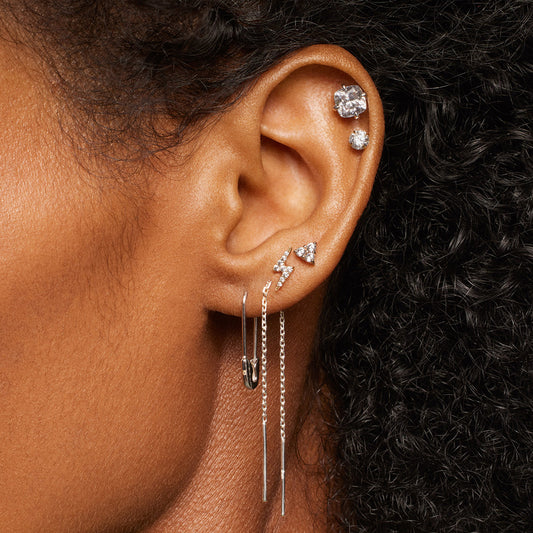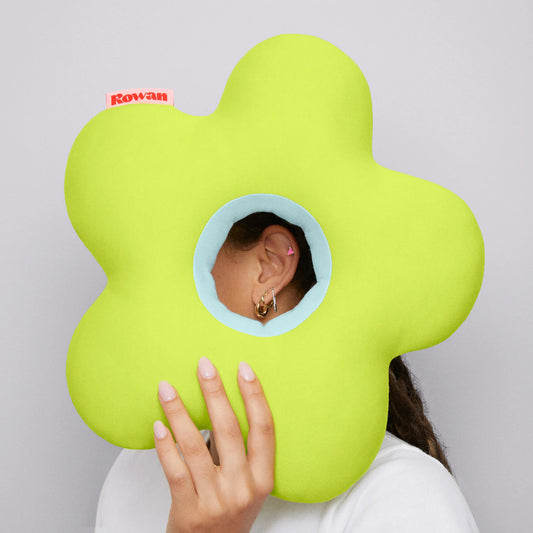Winter Piercing Care: Dos and Don’ts for Cold Weather
Help, my earring got snagged on my scarf!

The cold weather, often accompanied by biting winds and dry air, can affect the health of our piercings. Here are the essential dos and don’ts for winter piercing care to help you keep your piercings healthy through the chilly months.
The Risks Winter Poses to Your Piercings
The primary concern during winter is the exposure of piercings to harsh conditions. Cold weather can cause metal jewelry to contract, potentially leading to discomfort and increased sensitivity. The dry air can exacerbate skin irritation and delay healing processes.
Unfortunately, this is unpreventable, as we do not recommend becoming a recluse! That’s why it's important to adapt your piercing care routine to combat these winter-specific challenges.
Be Mindful of Scarves - Avoid Snagging and Irritation
Scarves are a winter essential, but when it comes to piercings, they can be a double-edged sword. The risk of snagging your jewelry on the fabric is high, which can lead to irritation or even injury. To mitigate this risk, opt for smooth, finely woven scarves and be extra cautious when putting them on or taking them off.
Scarves worn should be cleaned more often when caring for a new piercing. This is to minimize risk of transferring bacteria to the piercing site, minimizing risk of infection.
Our 14K White Gold & 14K Yellow Gold earrings are great for winter wear. They won’t tarnish, and they won’t snag thanks to the daintiness.
Say No to Ear Muffs and Full Ear Coverings
While it's tempting to cover your ears completely with muffs or other full coverings, this can create a moist environment conducive to bacteria growth. Such accessories can also put unnecessary pressure on your piercings, leading to discomfort and potential complications.
Beanies are a Winter-Friendly Option, But Watch the Piercing
Beanies are a safer alternative for those with ear piercings. They offer warmth without the risks associated with scarves and ear muffs. Choose a beanie that doesn't sit too tightly over your piercings and adjust it carefully to avoid direct contact with your jewelry.
Like scarves, beanies should be cleaned more often when caring for a new piercing. This is recommended to prevent the transfer of bacteria to your new and/or healing piercing.
Piercing Care During Winter Activities
Engaging in winter sports or activities often means wearing helmets or other gear that can impact your piercings. It's essential to clean your piercings thoroughly after such activities. Use a gentle, hypoallergenic cleanser like our Advanced Ear Cleansing Solution to remove any accumulated sweat or dirt. This is especially important for any activities that require a helmet, such as skiing. Additionally, you should opt for a low-profile earring like our sports studs when wearing a helmet.
Because helmets are not easily washed, disinfect your helmets after each use to prevent the spread of bacteria. Disinfectant sprays such as Lysol or Microban are quick and easy solutions to disinfect.
Watch for Cold-Induced Swelling and Redness
Extreme cold can cause your piercings to swell and redden, signs you should not ignore. If you notice these symptoms, take steps such as those outlined above to protect your piercings from further exposure and consult a professional if the condition doesn't improve. Make sure to use Advanced Ear Cleansing Solution more regularly to ensure the piercing remains clean and prevent further irritation.
Ensuring Healthy Piercings Throughout Winter
Taking care of your piercings during winter doesn't have to be a daunting task. By following these simple yet effective tips and tricks, you can ensure that your piercings remain healthy and infection-free. Remember, the key is to be mindful of the unique challenges that the cold weather presents and adapt accordingly.
For more in-depth advice and products tailored to piercing care, feel free to visit our studios to speak with one of our nurses.
Stay warm and keep your piercings safe this winter!



